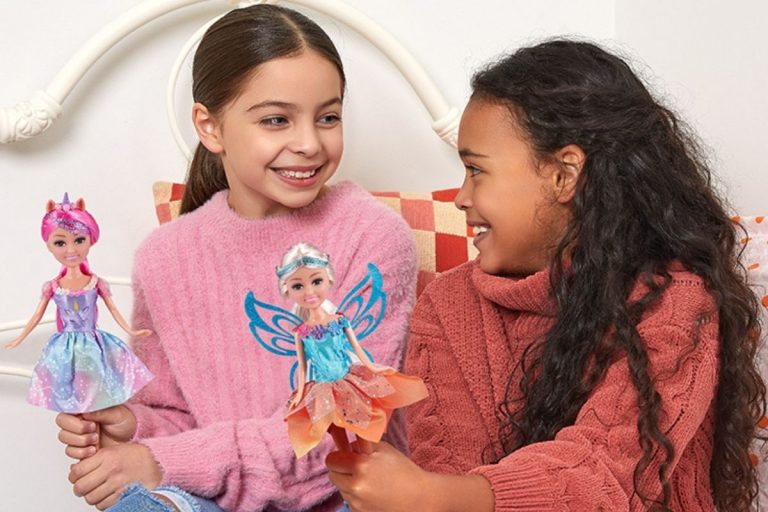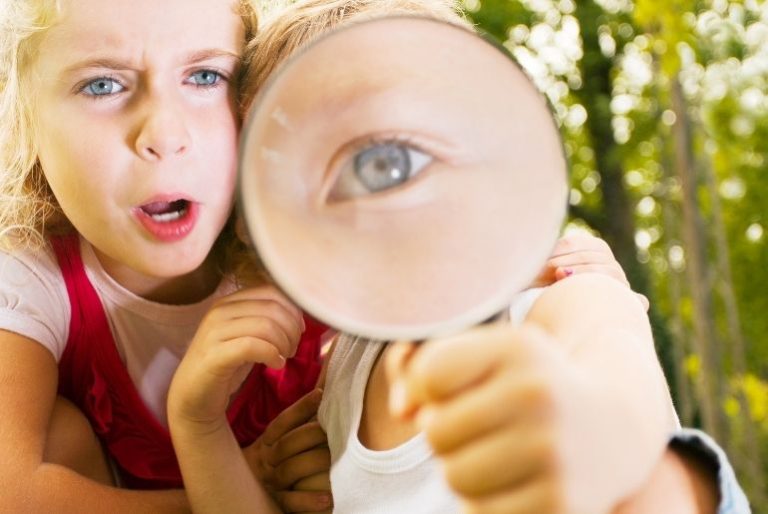Science and nature toys encourage your child to explore their world. More than just chemistry sets, science and nature toys are about exploration, problem solving, responsibility and wonderment. There is a whole world of lessons just waiting to be learnt.
What are Science and Nature Toys?
Science and nature toys are anything which encourages your child to explore their world, and they are deemed so important, that early childhood centres in NZ class them as a core area of play. In the early years science and nature toys include simple things like gardening tools, butterfly nets, and magnifying glasses, while in later years the ‘toys’ become quite complex.
Educational toy stores offer a fabulous range of science and nature toys, making sure that chemistry, biology, geology and physics are well and truly covered. Telescopes, pulleys and levers, electrical circuits, model skeletons, chemistry sets, solar systems, globes, and motors are all fabulous learning toys, and there are so many different types on offer. There are also many toys and activities you can make at home which will help develop your child’s interest in science and nature, and we will cover these in future articles.
What skills will my child develop through Science and Nature Toys?
Within every area of play, each different toy will help your child develop different skills, and the science and nature area is no different. However, in thinking about science and nature toys generally, there are several overarching areas of development where your child will definitely benefit.
Intellectual Benefits
Whether your child is planting a bean seed, building a motor, or making a chemical concoction, there are specific steps that need to be followed in order for the experiment to work. Because of this, science and nature toys offer a real chance for your child to develop skills in the areas of concentration, listening, and logical process.
As they develop skills in these areas, your child will begin to question how and why things work the way they do, and start to develop their own problem solving skills. Science and nature toys also encourage your child to question strategy and reasoning, which in turn will help them develop skills in true creative thinking.
Physical Benefits
In a general sense, science and nature toys usually require fine motor skills, which in everyday terms is the ability to make small or ‘fine’ movements with your body. Just as your child needs fine motor skills to write, draw, or play an instrument, fine motor skills are also required (and developed) in putting together a motor or dissecting a plant.
Emotional and Social Benefits
No matter what the specific experiment or toy, science and nature toys provide your child with a chance to question cause and effect – firstly at a physical level, and then at a personal and social level as well. Science and nature toys introduce the idea that personal actions have an effect on other people and other things, and at a young age children are aware that they share responsibility for something bigger than themselves.
Choosing Science and Nature Toys
As with anything, there are several things to consider when buying science and nature toys. Obviously safety is an important aspect, as is making sure the toy is appropriate for the age and stage of your child. Staff at educational toy stores should be able to help you out in these areas, but here are some basic guidelines to set you in the right direction.
Science and Nature Toys for Pre-school Age
At this age, science and nature is all about exploration and discovery, so toys need to encourage children to get out and about and see just what the world has to offer. Look for toys which are solid and strong, with no small parts which could become a choking hazard.
Some great science and nature toys for pre-school age children are:
- Child Sized Gardening Tools. Getting out in the garden is a great way for kids to learn about the world, but adult sized tools make it difficult and your child will soon get frustrated and give up. Having their own set of tools (and maybe their very own piece of the garden) will make gardening a fun thing to do. You can buy individual gardening tools for around $5 a piece, or a whole gardening kit for around $100. Just keep in mind the more you pay, the better quality you’ll get, and the plastic ones don’t last!
- Bug Catchers and Insect Nets. Having the chance to watch bugs and insects up close is fascinating for most young children, and in doing so they begin to realise there is more to the earth than just you and them. You should be able to find bug catchers and nets for less than $10 in emporium type stores, or check out an educational toy store for one with extra features.
- Magnifying Glasses and Binoculars. Think for a moment about how amazed your child would be if things doubled in size, right before their eyes. That’s how it is when you let them loose with a magnifying glass – pure wonderment! You can buy a fairly good magnifying glass for around $5, and a good child’s set of binoculars start at about $25.
- Model Skeletons. At about 4 years of age, children start to realise they’re pretty clever, but at the same time realise that there is more to life than meets the eye. There are lots of toys, puzzles and books available that introduce the idea of having something below the surface of the skin. It may be a puzzle of a person or animal that shows the skeleton beneath, it may be a lift-the-flap book with different layers of the human body, or maybe an actual model which your child can explore. Puzzles, books and models start from around $15.
Science and Nature Toys for 5 – 7 years old
While questioning and problem solving starts right from birth, at this age the process starts to gain complexity and school age kids become more aware of a bigger picture.
In addition to the preschool toys, great science and nature toys for 5 – 7 year olds include:
- Ant Farms. These farms provide an opportunity for your child to watch a whole world close up, while at the same time giving them a small sense of responsibility. Ant farms cost as little as $20 from educational toy stores, with the new gel ant farms costing from $60 and up.
- Maps, Globes and Solar Systems. As children become aware that there is a whole world outside of their own town, they’ll want to start putting that into perspective. Maps and models of the world (and the universe), help to bring that bigger picture to life. You can buy maps and stick on solar systems for less than $15, but globes and models can be considerably more. Expect to pay at least $25 for a small, cheap globe and $60 for a reasonable globe, if not more.
- Magnets. It’s amazing how much fun children can have with magnets, and they are relatively inexpensive to buy. You can buy a magnetic experiment kit, or make your own by putting together a few different types of magnets, and a selection of magnetic and non-magnetic materials. Individual magnets range in price from $2 – $10 depending on the size and style, and you can buy a basic magnetic experiment kit for approximately $25.
- Nature Collections. This is a great age to encourage your child to start a nature collection – it may be shells, rocks, or pressed flowers and leaves. You can buy nature collection kits with everything you need, or set them up with nothing more than a shoebox to store their treasures in. Tweezers and a magnifying glass are good editions to their kit, as is a book about their chosen collection. There are great books and charts available to help children sort and learn about New Zealand shells, plants, and rocks, and these cost around $20 – $25.
Science and Nature Toys for 8 – 12 year olds
By this age, your child will have developed plenty of skills in the areas of process, logic and problem solving, and will enjoy making, doing, and working things out for themselves.
Some great science and nature toys for 8 – 12 year olds are:
- Science Kits. There are literally hundreds of great kits available which provide your child with all the necessary materials and instructions to build their very own working ‘something’. They usually involve a motor or electrical circuit of some sort, some are based largely around pulleys and levers. There are also a range of kits which focus on experiments such as growing crystals or forecasting the weather. There’s even DNA kits, and rotten experiment kits; something for every kid really. Whatever the kit, children at this age will enjoy the opportunity to problem solve and create something all on their own. Kits start from just $15, and even great kits are only around the $60 mark.
- Telescope. If your child has demonstrated a real interest in space, the moon, stars and galaxies, then this age is a great time to introduce a telescope. Obviously the more money you spend, the more of space you will see, but even a relatively inexpensive telescope will introduce them to a whole new world. You can get a reasonably good telescope for about $50-$100, but you can literally spend thousands of dollars if you really want to.
- Chemistry Sets. I am the 4th child out of 5, and we had one chemistry set that was passed down the entire family. By the time it got to me there were all sorts of things missing and broken, but the microscope and slides were all still intact. I have fond memories of growing mould, and examining fly wings under close magnification! The chemistry sets available these days are much more complex, and include all sorts of ideas and instructions for experiments. If looked after, a good chemistry set is something that can be passed on from child to child. Chemistry Sets start at about $40, but do go right into the hundreds, depending on how complex of a kit you want to own.
- Robotics and engineering. In this modern world where tomorrow’s jobs don’t even exist yet, getting kids involved with robotics, engineering and coding could open a whole new future to them. The creative process that goes on as children learn to engineer their own robots, and then create the code that makes them move, is astonishing. The more of this they can learn at a young age, the more open they’ll be to experimenting and creating when they’re older.
Remember, science and nature is about exploring and experimenting, so don’t get too hung up about what specific toy your child is exploring and experimenting with.
The key to this area, (as it is with all areas of play), is to give your child lots of opportunities to experience real, hands-on learning. After all, in the words of Albert Einstein – “Knowledge is experience. Anything else is information”.
You might also like to read our Benefits of creative play article. Otherwise, check out all of our great Toy articles here.







